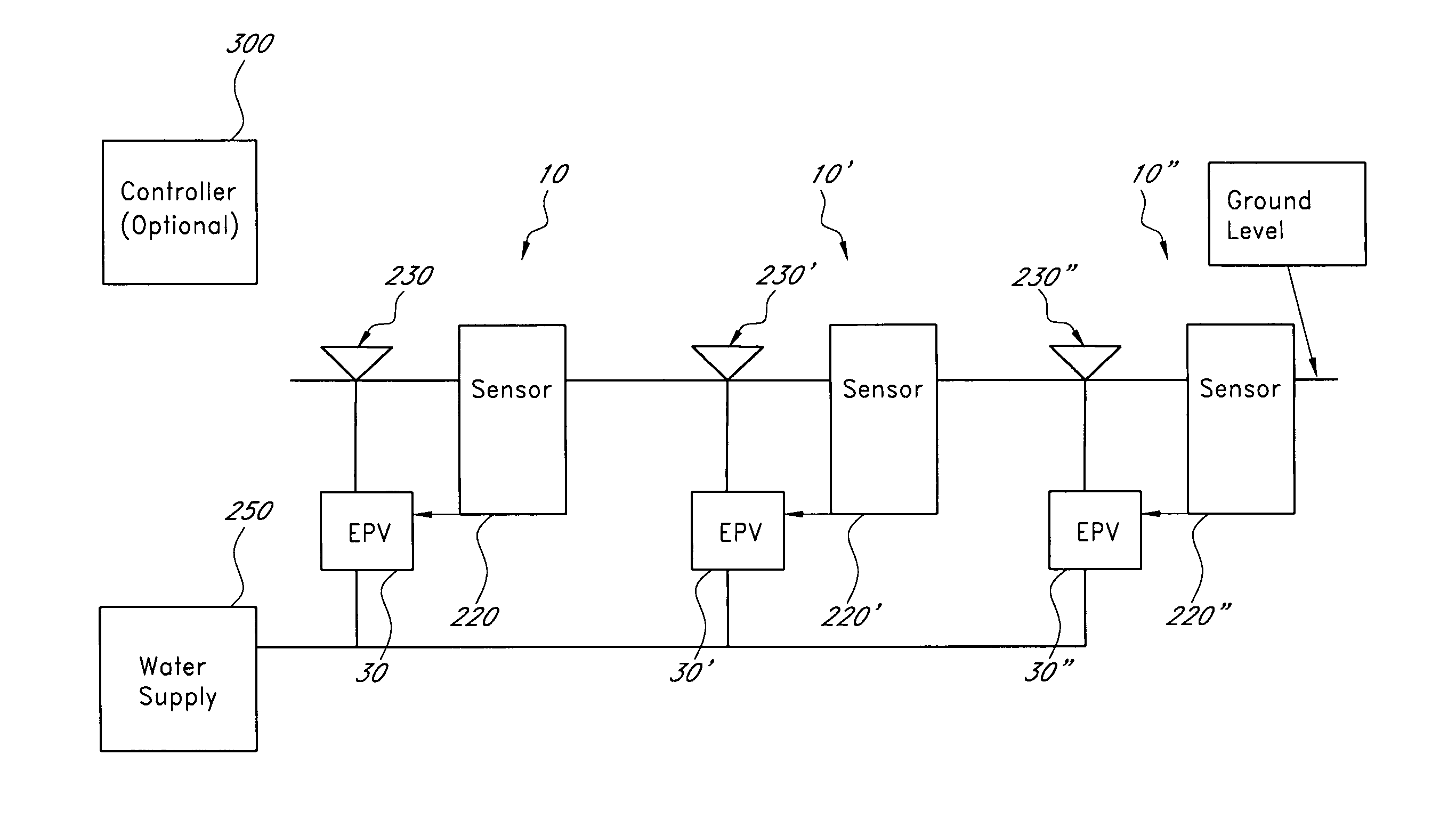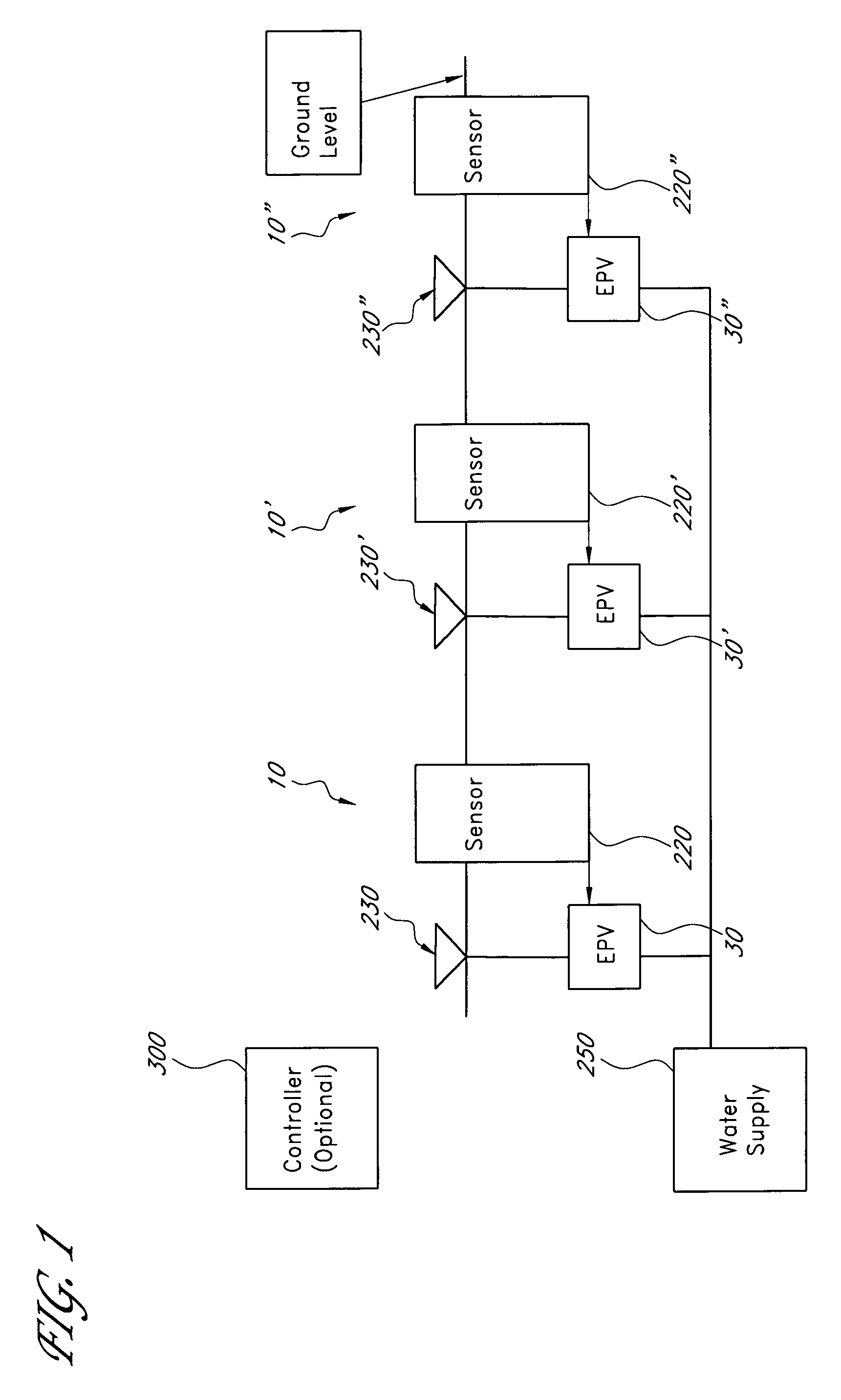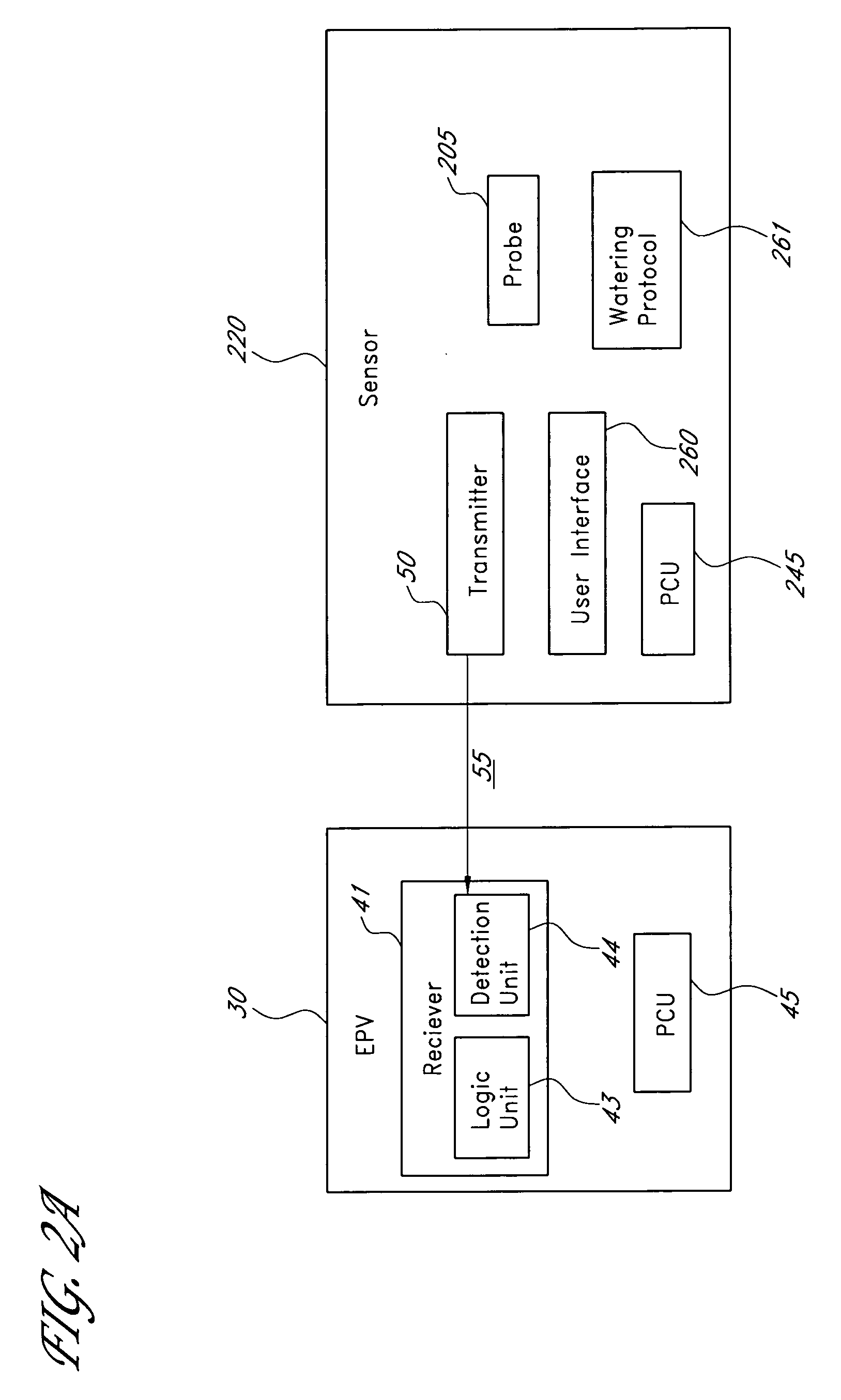Low power system for wireless monitoring of an environment and irrigation control
a low-power system and environment technology, applied in the field of irrigation systems, can solve the problems of system use, high cost of wireless devices, frequent maintenance, etc., and achieve the effect of consuming less power and dredging somewhat quickly
- Summary
- Abstract
- Description
- Claims
- Application Information
AI Technical Summary
Problems solved by technology
Method used
Image
Examples
Embodiment Construction
[0026]The low power watering systems disclosed herein contain wireless electrically powered valves (EPVs) and wireless sensors that cooperate to provide water to an area. In some embodiments, each sensor is configured to send information or commands to an EPV, which in turn controls a watering unit (e.g., a sprinkler) that delivers water to a subregion that contains the sensor. While the EPVs and sensors operate on limited power sources (e.g., conventional batteries), power requirements are substantially reduced by the use of power control units (“PCUs”) that efficiently toggle the EPVs and sensors between powered and unpowered states. Power is thus conserved because these components are not continuously powered. Preferably, each component (EPV or sensor) includes one PCU that controls its toggling between powered and unpowered states.
[0027]In one embodiment, the system uses EPVs of the type described in U.S. Patent Application Publication No. US 2004 / 0231723 A1, the entirety of whi...
PUM
 Login to View More
Login to View More Abstract
Description
Claims
Application Information
 Login to View More
Login to View More - R&D
- Intellectual Property
- Life Sciences
- Materials
- Tech Scout
- Unparalleled Data Quality
- Higher Quality Content
- 60% Fewer Hallucinations
Browse by: Latest US Patents, China's latest patents, Technical Efficacy Thesaurus, Application Domain, Technology Topic, Popular Technical Reports.
© 2025 PatSnap. All rights reserved.Legal|Privacy policy|Modern Slavery Act Transparency Statement|Sitemap|About US| Contact US: help@patsnap.com



